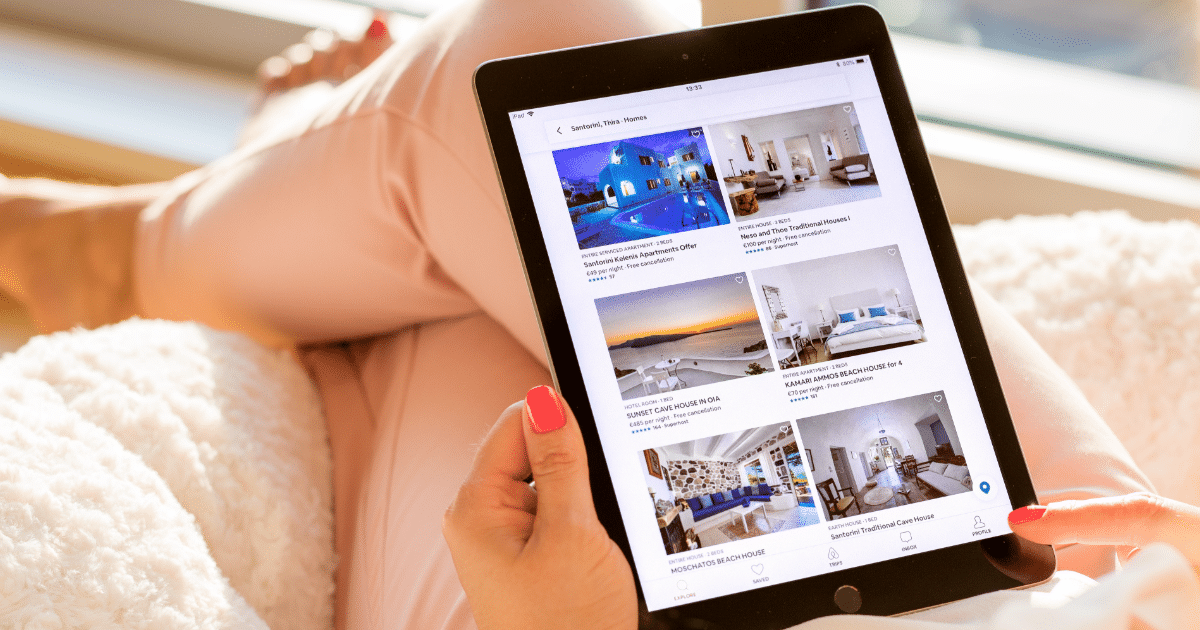
B2B display advertising can feel like a gamble. Will your ad get seen, clicked, or drive anything meaningful? In a digital world packed with noise and shrinking attention spans, even seasoned marketers struggle to cut through.
But with the right strategy, B2B display ads do more than deliver impressions. They help you stay visible during long buying cycles, engage decision-makers with precision, and move real pipeline. This guide breaks down display ad best practices that work, so you can build smarter, stronger campaigns that scale.
Before we get into execution, let’s ground ourselves in what B2B display advertising is, and how it sets the stage for smarter strategy.
What Is Display Advertising and Why It Still Works
Display advertising is a form of online paid media that uses visual-based ads (banners, images, or video) to promote a product or service on websites, apps, and social platforms. These ads are typically delivered through networks like the Google Display Network or programmatic platforms that place them based on targeting, content, or behavior.
So why does B2B display advertising still work? Because in complex, multi-touch B2B sales cycles, staying top-of-mind across stakeholders isn’t optional; it’s essential. Display ads help you maintain consistent visibility, reinforce value props, and stay present during critical decision windows. And when powered by intent data, they become a precision tool for reaching buyers who are actively in-market.
But just being present isn’t enough. In B2B, every impression is a chance to influence a buyer or lose them. High-performing display ads are built with intent, not guesswork. What are the 4 parts of a display ad and why each part matters when the stakes are high:
- Headline: This is your first impression. Make it short, specific, and value focused. A strong headline stops the scroll and tells the viewer why they should care.
- Visual or graphic: Reinforce your message. Clean, professional visuals outperform flashy effects in B2B display ads.
- Value proposition: This is where you deliver the “why.” Make the benefit clear and tangible (e.g., “See how top CMOs generate pipeline faster”).
- CTA: Every great ad ends with a next step. Action-oriented, frictionless CTAs like “See It in Action” or “Get the Report” work best.
Pro Tip: Highlight pain points by role. For example, IT professionals care about integration. CMOs care about pipeline. Personalization fuels relevance.
Once you’ve nailed the core components of a display ad, the next step is choosing the right format. The types of display ads are designed to support different marketing objectives from awareness to conversion.
- Banner ads: Simple, rectangular units great for brand reinforcement and retargeting.
- Responsive display ads: Automatically adapt to placements, making them ideal for maintaining brand consistency across devices.
- Video ads: Perfect for product demos, testimonials, or quick value overviews that build trust and engagement.
- Interactive ads: Educate and engage users directly, without taking them off the page.
- Native display ads: Seamlessly blend into the content of the site or platform to feel less intrusive.
Funnel Fit: Use interactive ads mid-funnel to deepen engagement, and native ads at the top of the funnel to educate without overwhelming.
Understanding ad formats is one thing. Seeing them executed well is another. Here’s what a high-impact B2B display ad looks like in practice.
What Is an Example of a Display Ad That Actually Performs?
Picture a banner ad with a cloud dashboard image, a headline like “Simplify Your Marketing Analytics,” and a CTA button reading “See It In Action.”
This is an example of an effective display ad: strong visuals, quick value, clear CTA.
But great ads don’t just happen by chance. They follow a set of proven guidelines that make the difference between an ad that gets ignored and one that performs.
What do the general rules for display advertising include? When developing a display ad creative, here’s what drives results:
- Keep messaging focused and benefit-driven. Clarity beats cleverness.
- Use high-contrast visuals that align with your brand.
- Ensure your brand is clearly visible. Brand recognition builds trust over time.
- Make the CTA stand out with clear language and bold design.
- Test multiple variations of headlines, visuals, and CTAs to find out what drives clicks and conversions.
Performance Insight: Smart testing shortens conversion paths and lifts qualified pipeline. And in B2B, that means real progress against revenue goals.
Display advertising examples in B2B are usually more offer-driven than their B2C counterparts. They’re about positioning your brand in front of the right decision-makers with relevant content.
Below are three scenarios where display ads shine:
- Gated content promotion: A SaaS company runs display ads promoting an industry benchmark report, targeting operations managers at mid-sized tech firms. The CTA? “Get the 2024 SaaS Ops Report.”
- Webinar registration: A cybersecurity vendor uses display ads to promote a webinar on ransomware trends, retargeting visitors who’ve read related blog content in the past 30 days.
- Demo retargeting: If a prospect lands on a demo page but doesn’t convert, display ads can follow up with a testimonial video or a simplified value prop, tailored to their industry.
Why It Works: These tactics align with intent and buying stage. It’s not about blasting messages; it’s about making every impression count.
What Makes a Great Display Ad?
We’ve seen display ads in action. Next, let’s explore the elements that make them truly effective.
What is a good display ad? Great B2B display ads don’t just fill space. They communicate what you offer, why it matters, and the action to take. Relevance beats flash.
These aren’t just pretty creatives; they’re precision-crafted to connect with buying committees and drive movement through the funnel.
Below are some of the best display ads examples from B2B leaders that show what strong execution looks like:
- Salesforce – Animated banners promoting whitepapers, using minimal copy and strong brand colors.
- HubSpot – Carousel ads that highlight key benefits in bite-sized, scrollable frames.
- LinkedIn Ads – Personalized retargeting creative that mirrors the viewer’s recent activity and uses tailored CTAs.
These ads succeed with clarity, intent-match, and visual hierarchy. They cut through noise because they speak to real pain points with real solutions.
Strategic Lens: These brands aren’t just advertising. They’re enabling faster decision-making and deeper engagement through data-informed design.
Read more about what makes a great display ad: What Makes a Good Display Ad for B2B Decision-Makers.docx
Display Ad Best Practices That Turn Visibility Into Pipeline
Whether you’re running a brand awareness campaign or retargeting high-intent accounts, smart execution is what turns impressions into real results. These display ad best practices aren’t just about execution; they’re about lifting results. From improving MQL quality to eliminating wasted spend, each tactic here is designed to help marketers convert attention into action and move leads deeper into the funnel, especially when scale, precision, and ROI are on the line.
Google display ads best practices
Google Display Ads can be both a blessing and a burden. On one hand, the Google Display Network offers unmatched reach across millions of business and news websites where your ideal buyers are browsing. On the other hand, too many marketers waste spend by treating Google Display like a B2C channel, chasing impressions instead of intent.
B2B buyers don’t make impulse clicks. Their attention is measured, analytical, and based on credibility. To reach them, your Google Display strategy must balance automation with precision: responsive display ads, contextual targeting, and data-layer integration that align with your funnel. It’s not about how many people see your ad, it’s about who sees it, where, and when.
Imagine your target audience, say, a VP of IT, reading TechCrunch or CIO.com. Your display ad should feel like a natural part of their professional landscape, not a distraction. The goal is to deliver intelligent visibility, staying top-of-mind without being intrusive.
- Use responsive display ads: Google auto-optimizes placements across devices.
- Leverage smart bidding: Let machine learning prioritize conversions, like demo sign-ups or whitepaper downloads, instead of just impressions.
- Exclude low-performing placements: Weed out irrelevant inventory, e.g., consumer gaming sites, to stay in front of professional audiences.
- Set frequency caps: Repeated exposure can help in B2B display advertising, but too much risks fatigue. Limit impressions per user to maintain relevance.
- Target custom intent audiences: Zero in on decision-makers actively researching solutions like yours.
Funnel Fit: GDN supports both awareness and remarketing with precision. When combined with intent data, it becomes a high-leverage channel.
Banner ad design best practices
The problem often isn’t the budget or placement; it’s design clarity. In a world where B2B decision-makers scroll through content at lightning speed, your banner ad has about one second to make an impression that feels credible and relevant.
A well-designed banner ad doesn’t just look good; it commands attention without shouting. It feels polished, familiar, and professional. Three traits that define trust in the B2B space. Whether you’re advertising enterprise software, data solutions, or thought leadership content, a clean, focused design ensures your message stands out amid the noise of cluttered dashboards and generic corporate imagery.
- Stick to standard sizes: Formats like 300×250 and 728×90 are most supported across industry news sites, association portals, and forums where decision-makers spend time.
- Maintain brand consistency: Use company-approved fonts, colors, and logo, especially important for building trust across longer sales cycles.
- Create contrast: B2B buyers skim fast. High contrast makes your message pop against content-heavy pages.
- Keep it simple: Focus on one offer per ad.
- A/B test formats for different audiences (e.g., retargeting tech leads vs. cold outreach to CMOs) to see what drives the most engagement.
Pro Tip: For executives, simple designs with logo plus CTA work best. Think precision, not pizzazz.
How to Make Display Ads Better with Data, Targeting, and Strategy
Great design is only the beginning. Real ROI comes from aligning creative with strategy, data, and buyer behavior. Following best practices is a great starting point, but real performance comes from continuously testing, learning, and optimizing. The best display ads don’t just look good; they evolve with audience needs. They use real performance data to shape creative, address pain points, and stand out without being intrusive.
- Retarget with dynamic messages that reflect the user’s behavior or buying stage. A message like “Still Comparing Vendors? See Why CMOs Choose Us” increases relevance and helps convert fence-sitters.
- Localize messaging by industry, region, or persona. For example, “See How Healthcare CMOs Grow Pipeline Faster” speaks directly to vertical pain points and performs better in segmented campaigns.
- Test GIFs, HTML5, and static formats. Use GIFs for top-funnel storytelling, HTML5 for interactivity and engagement, and static formats for clarity in retargeting and lower-funnel execution.
Best Practices When Advertising with Retargeting Ads
Every B2B campaign manager knows the frustration: a prospect visits your pricing page, lingers for 30 seconds, and then disappears. Retargeting ads are your second chance — but they can easily become your brand’s biggest annoyance if done wrong. In B2B, retargeting isn’t just about “following” users across the web. It’s about continuing a conversation. Decision-makers don’t appreciate being chased by the same static banner; they appreciate thoughtful reminders, ads that align with their stage in the buyer journey, and address their evolving interests.
- Segment your audience by behaviour and funnel stage: Instead of one-size-fits‐all, separate users who visited a “pricing” page from those who just visited the home page. Tailor messaging accordingly.
- Avoid showing redundant or irrelevant ads: If a prospect already converted, exclude them from further retargeting for that offer to avoid negative perception.
- Ensure your landing page aligns with the ad message: The creative and landing page must match in promise and content. This alignment boosts conversion.
- Cap frequency to avoid fatigue: Showing the same ad too many times reduces impact and may damage brand perception. Set sensible limits.
- Use strong, context-specific CTAs for warm prospects: Because the user is already familiar, your ad’s CTA can be more direct (e.g., “Schedule a Demo,” “See ROI Video”).
- Track metrics that matter for B2B: For retargeting, measure conversion rate, cost per qualified lead, and influence on pipeline, not just clicks
The magic of retargeting lies in its subtlety. It’s the ad that reappears when the buyer is reconsidering vendors or revisiting research. It’s the visual nudge that reminds them of your value proposition, not your persistence. When executed strategically, retargeting bridges the gap between interest and action, helping B2B brands maintain relevance without crossing the line into fatigue.
Why strategy drives results in B2B display advertising
Digital advertising is projected to account for 73.2% of global ad revenue in 2025, and that means more noise, more competition, and more pressure to perform. In this landscape, optimizing display ads isn’t optional; it’s how you break through and drive meaningful outcomes.
Optimizing display ads should connect directly to outcomes marketers care about: lead velocity, ABM readiness, and pipeline contribution.
- Use first-party and intent data to tailor creative to stage and persona.
- Track post-click behavior to align campaigns with sales enablement.
- Rotate messaging to avoid ad fatigue and extend campaign lifecycle.
Tapping DemandScience’s intent-driven strategies, B2B marketers can anticipate measurable performance gains, such as increased MQL volume, higher demo conversions, and improved mid-funnel engagement, especially when campaigns are aligned to buyer behavior and segmented by role or industry.
Optimize what matters: Performance-first display ad strategy
How to optimize display advertising isn’t a one-time task; it’s an ongoing strategy. To get the most out of your display ad investment, you need to measure, iterate, and fine-tune every element of the campaign, from audience targeting to post-click experience.
- Measure conversion rates, cost per MQL, and post-click behavior. Don’t stop at CTR. Focus on metrics that reflect actual lead quality and engagement after the click. This helps tie display performance directly to pipeline impact.
- Segment creative by buyer role. Customize messages for different personas based on their specific pain points and decision criteria. One-size-fits-all creative underperforms in B2B.
- Match landing page to the ad. Ensure message and offer continuity. If your ad promotes a product tour, the landing page should drive directly to the demo, not to a generic homepage or gated form.
- Rotate creatives to avoid fatigue. Audiences tune out when they see the same ad too often. Refresh visuals, headlines, and CTAs regularly, especially for longer sales cycles and retargeting campaigns.
- Retarget based on behavioral triggers. Use site actions like pricing page visits, mid-form abandonment, or repeat blog views to trigger relevant follow-up ads. Timing and message precision are key to re-engagement.
That means looking beyond surface-level metrics. Focus on lead quality, buyer engagement, and journey progression. Relevance and precision, not volume, are what drive results.
Performance Insight: Using DemandScience’s display orchestration suite, marketers can tie creative to verified intent, dynamically personalize campaigns, and orchestrate retargeting across channels, all while optimizing to revenue outcomes, not vanity metrics.
From Impressions to Impact: Smarter Display Ads
B2B display advertising isn’t just about getting seen; it’s about being remembered, driving engagement, and accelerating pipeline. When backed by intent data, strategic design, and continuous optimization, display ad best practices move buyers through the funnel with precision.
If you’re ready to take control of your display strategy, DemandScience is here to help. Our solutions combine verified data, advanced targeting, and strategic support to help you maximize every impression and turn them into measurable outcomes.
Let’s build smarter display ad campaigns together.
Supercharge your B2B marketing strategies today.










